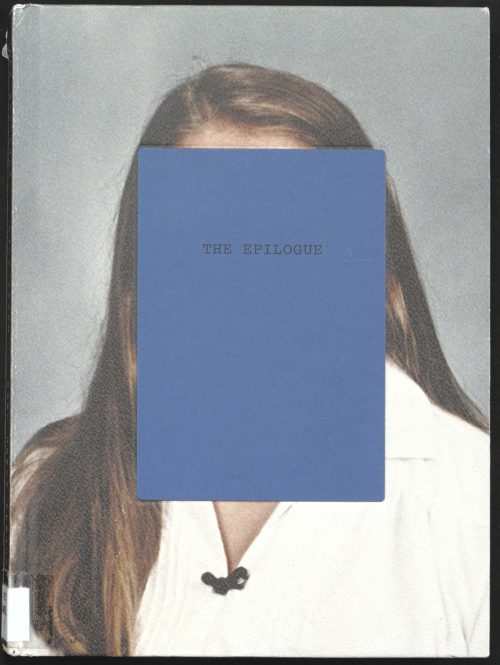
Laia Abril, The Epilogue, Cover,
Stockport 2014.
The Epilogue (Laia Abril, 2014) and Find a Fallen Star (Regine Petersen, 2015): both photobook’s titles carry the conclusion of the events they want to tell about. And both books are what one could call research-based, photobooks that are preceded by intensive research, books that tell multimedia stories in order to reconstruct – at least in these two cases: In Abril’s work, the knowledge of the already deceased protagonist’s bulimia is presented as a different temporal segment, and the family’s ignorance is reflected through the ignorance of the reader. Petersen, who has investigated several cases of meteorite impacts, also ponders on how something can be shown that cannot (any longer) be seen. Both books do this with a variety of objects: from the advertisement to the letter, the most diverse forms of found objects are equalised into the image, knowing fully well that semantics of the document are transmitted or even evoked. In comparison with the photobook Redheaded Peckerwood (Christian Patterson, 2010) I would like to diversify and differentiate the ‘genre’ of research-based photobooks. My contribution is dedicated to the narrative ‘between’ image and text and its epistemic consequences. Methodically, I will ask myself what pictorial evidence procedures can be found in research-based photobooks, whereby I will also devote myself to the narration between image and text in order to look at the entire book structure in its epistemological consequences.